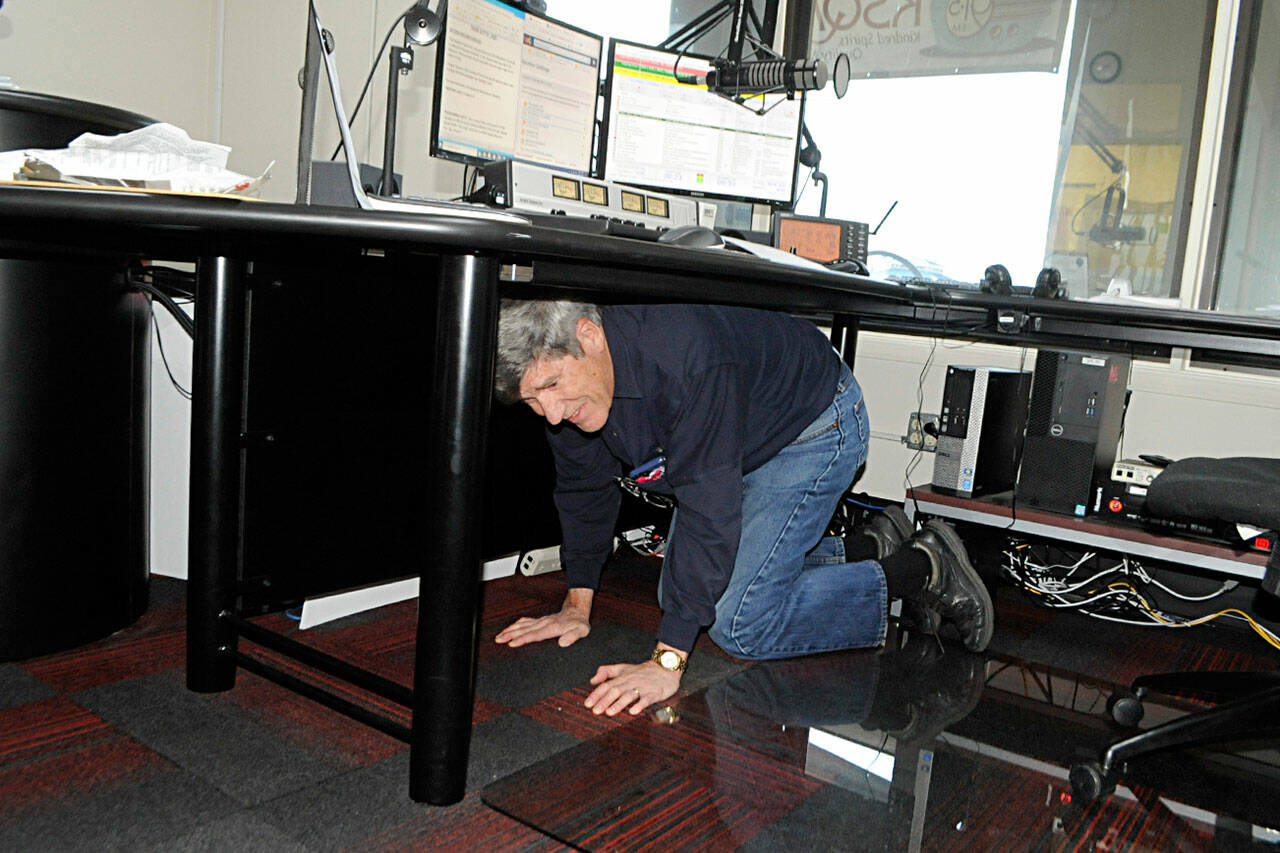From sending “Good Vibrations” over the airwaves to holding on under tables and desks, volunteers at Sequim’s KSQM 91.5 FM radio station last week looked to help locals keep from getting rattled by the possibility of a major disaster, during The Great Washington Shakeout.
The 60-second drill occurred at 10:21 a.m. on Oct. 21, following a tradition of putting the national and local event on the third Thursday of October. More than 7,000 residents of Clallam County registered to participate, according to the Clallam County Emergency Management team.
About a dozen KSQM volunteers participated in the drill, with announcer Bud Davies putting the test drill on air while others dropped, covered and held on before filing outside to the parking lot.
Local emergency preparedness training increased in recent years with growing concerns for tsunamis and potential earthquakes, such as ones caused by the Cascadia subduction zone, which could be magnitude 9.0 or higher.
KSQM director Jeff Bankston said the station staff’s goal is to get information to people during an emergency if other communication methods are down.
“A lot of people rely on the internet for communication, which could be down,” KSQM chief operator Neil Serafin said.
“Unless they have a satellite phone or HAM radio, communications outside of the county may be really limited.”
Depending on fuel availability, the station’s transmitter can stay on air for about a week with a generator, he said, and if the transmitter and building off Blue Mountain Road are still standing, it can offer an emergency broadcast and studio capabilities.
Serafin added the importance of being able to communicate during the first few days of a disaster, because help may not come for several days.
“We’ve got to figure out what to do and how to communicate,” he said.
KSQM’s signal reaches from the Blyn area to west of Port Angeles to southern Victoria to the San Juan Islands, Serafin said.
For more information, listen to 91.5 FM, or go online to ksqmfm.com.
Drop, Cover, and Hold On
For an earthquake, first responders recommend the “Drop, Cover and Hold On” method:
• Drop where you are, onto your hands and knees, which allows you to stay low and crawl to shelter if nearby.
• Cover your head and neck with one arm and hand. Move and stay on your knees and bent over to be underneath a table or desk or go to an interior wall away from windows.
• Hold on until shaking stops
Emergency planners recommend people stay indoors until the shaking stops; move inland and to higher ground if in a coastal area; if outside move to a clear spot; and if driving pull over to a clear spot and wait for shaking to stop until proceeding with caution.
For more information visit shakeout.org/washington.



